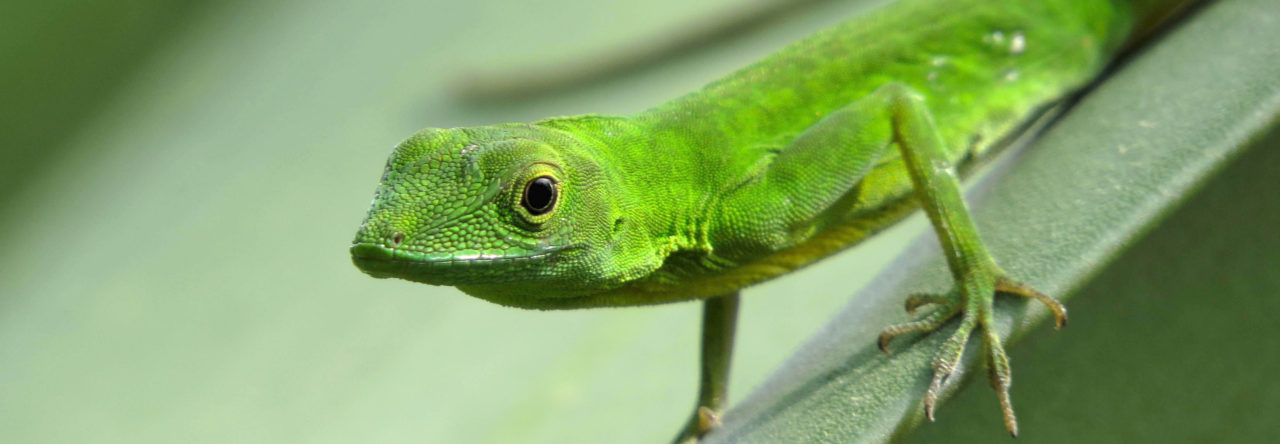As the last 40 years of research attests, anoles present a great study system to investigate questions in evolutionary ecology, especially at the macroevolutionary, cross-species level. Indeed, the rich literature on a large variety of topics including sexual dimorphism, ecomorphology, size evolution, biomechanics and many other topics—reviewed in Lizards in an Evolutionary Tree—has made anoles a veritable model system for evolutionary study.
One area that has received surprisingly little attention is behavioral ecology. Anole behavior is remarkably easy to study in the field, at least for many species. And interesting patterns of divergence in behavior (e.g., territory, mating systems, foraging mode) among closely related species, combined with convergence at a deeper phylogenetic level, make anoles an attractive group for such studies.
One issue with regard to comparative, cross-species studies of anoles, regardless of what type of trait is being studied, has received little attention. Namely, intraspecific geographic variation. Comparative studies usually use a single value for each species in the analysis, but relatively little work has been conducted examining how anoles vary in morphology, behavior, or ecology throughout their range. Indeed, we have good reason to suspect that such variation may be substantial, for a variety of reasons: historically, many subspecies have been named (albeit often based on what might seem like trivial morphological differences); many anole species occupy a wide variety of habitats, even over short distances, and such habitats might be expected to lead to substantial differences in patterns of natural selection; and wherever it has been looked for, geographic variation seems to occur, and is often correlated (at least with respect to morphology, the most studied trait) with environmental variation. For these reasons, study of the extent and cause of geographic variation would be well worth the effort.
One study of this sort examined variation in body size and aspects of social structure in the small anole A. schwartzi on the island of St. Eustatius in the northern Lesser Antilles. Preliminary observations on this species indicated that it occurs primarily in shady areas, and seemed to have a preference for inhabiting rock piles. Joyce et al. examined the anoles on 10 rock piles and in 10 nearby, non-rocky forested habitat, to compare morphology and behavior. They found that both males and females are ca. 4% larger on rock piles; that male density was twice as great and female density three times as great on rock piles, meaning that the ratio of females to males increased in the rocky areas; and that males moved and engaged in intrasexual territorial encounters more often in the rocky areas.
These results suggest that at least sexual selection may be acting differently in different habitat types. Why densities are different is not clear; prey are not more abundant on the rocks, eliminating one possibility. Other possibilities include safety from predators and differences in thermoregulatory opportunities.
More generally, these data indicate that important aspects of anole biology may vary across habitats, even on very small spatial scales. This message is not new to anole biologists—work in the 70’s and 80’s by Schoener, Roughgarden and others demonstrated just that, and some such work continues to this day (for example, here). Nonetheless, it’s an important message to keep in mind, and highlights the opportunities for future fine detailed studies of intraspecific variation.
- Evolution in Real Time on Lizard Island - March 23, 2025
- Spider Snags Adult Anolis osa - March 22, 2025
- An Homage to the Green Anoles of New Orleans - March 21, 2025



Leave a Reply